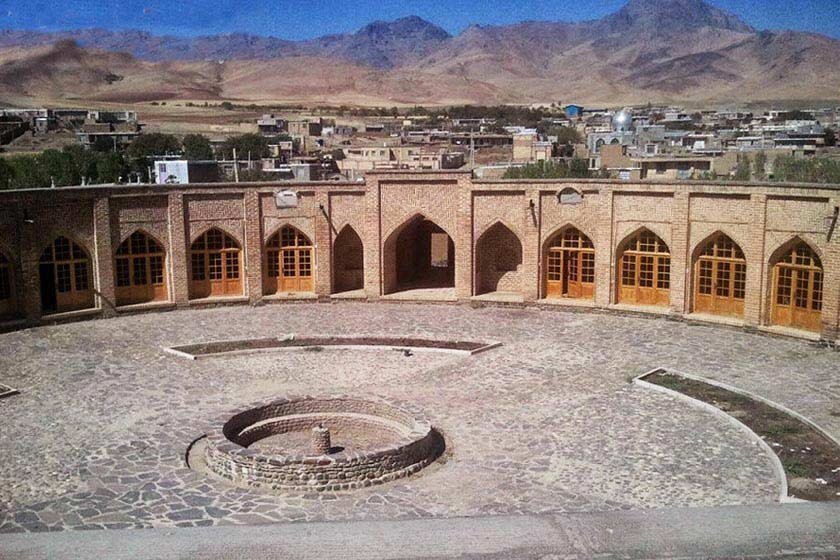UNESCO assessors to examine centuries-old Iranian caravanserai

TEHRAN – A team of UNESCO assessors and cultural heritage experts will be examining the centuries-old Taj-Abad Caravanserai, which is located in Iran’s Hamedan province.
“A rehabilitation work has been commenced on the historical caravanserai to make it ready for the inspection,” the deputy provincial tourism chief said on Thursday.
“The experts are slated to evaluate the caravanserai and its premises for possible inscription on the UNESCO World Heritage list,” the official said.
A budget of 2.2 billion rials ($53,500 at the official exchange rate of 42,000 rials per dollar) has been allocated to the rehabilitation project, she added.
It involves repairing the damaged parts such as walls, wooden doors, and flooring as well as strengthening the historical inn, she noted.
Unlike most caravanserais in Iran, which have rectangular-shaped designs, Taj-Abad has a circular plan, which is extremely rare among Iranian caravanserais, and it makes it one of the most interesting historical monuments in the province.
The Safavid-era (1501–1736) structure, which is located in Bahar county of the west-central province, is inscribed on the national heritage list.
Known in classical times as Ecbatana, Hamedan was one of the ancient world’s greatest cities. Pitifully little remains from antiquity, but significant parts of the city center are given over to excavations, and there’s a scattering of historical curiosities.
Hamedan never falls short of offering cultural heritage sites to its visitors. Scenic natural landscapes, traditional restaurants, public gardens, and colorful outdoor markets, and more importantly, its hospitable people make for an unexpected slice of the city.
Iranian caravanserais being ready for collective UNESCO tag
An all-inclusive dossier of a select of Iranian caravanserais is being prepared to be evaluated during the next session of the World Heritage Committee, which will be held in 2022.
In 2019, the tourism ministry announced that Iran is developing a dossier for a selection of its historical caravanseries for a possible inscription on the UNESCO World Heritage list. In this regard, cultural heritage experts are assessing such monuments that are scattered across the country to make a shortlist in terms of their architecture, historical and cultural values.
Caravansary is a compound word combining “caravan” with “sara”; the former stands for a group of travelers and the latter means the building. They often had massive portals supported by elevated load-bearing walls. Guest rooms were constructed around the courtyard and stables behind them with doors in the corners of the yard.
Iran’s earliest caravanserais were built during the Achaemenid era (550 -330 BC). Centuries later, when Shah Abbas I assumed power from 1588 – to 1629, he ordered the construction of network caravanserais across the country.
Such roadside inns were originally built in various epochs along ancient caravan routes in the Muslim world to shelter people, their goods, and animals. The former Silk Roads may be the most famous example dotted by caravanserais.
For many travelers to Iran, staying in or even visiting a centuries-old caravanserai, can be a wide experience; they have an opportunity to feel the past, a time travel back into a forgotten age!
ABU/AFM

Leave a Comment